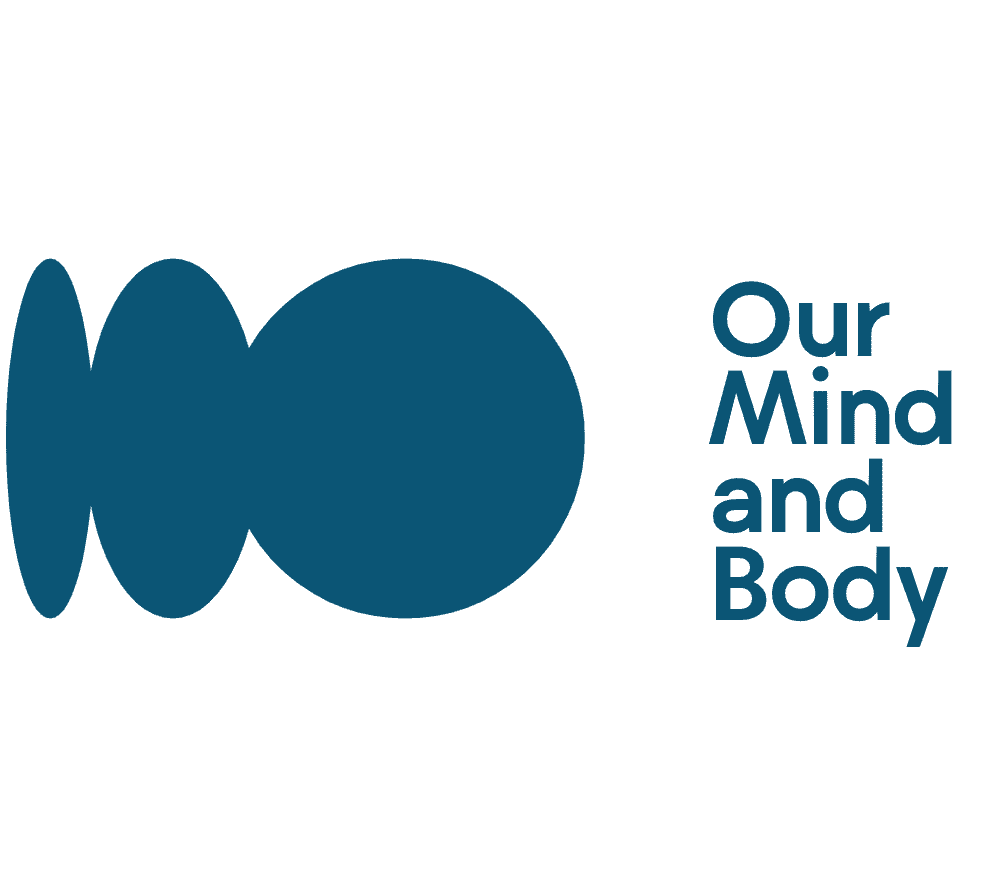Inspiration
Responsible – How This Power Word Can Make You Better

Being accountable is crucial for experiencing fulfillment and happiness in life. It is a powerful concept that has the potential to transform your life and boost your personal development. Accountability encompasses being responsible for your actions, being dependable, efficiently managing your time, self-care, and giving back to society. It is a valuable tool in achieving your goals and becoming a better version of yourself.
Imagine having all the freedom in the world but without any responsibility. Your life would be chaotic, disorganized, and unfulfilling. On the other hand, imagine being responsible for everything in your life – your actions, decisions, relationships, finances – with discipline and dedication. You would have a sense of purpose, direction, and satisfaction that nothing else could give you.
This article will explore how practicing responsibility can transform your personal and professional life for the better by focusing on its benefits and strategies for developing this essential trait.
Key Takeaways
- Responsibility encompasses aspects such as accountability, dependability, time management, self-care, and giving back to society.
- Practicing responsibility in personal and professional life can bring benefits such as improved relationships, self-discipline, and effective handling of challenges.
- Cultivating discipline, self-care, and giving back through volunteer work or charitable donations are essential for maintaining balance in life and making a positive impact on society.
- Making responsibility a habit involves setting clear goals, tracking progress, overcoming obstacles, celebrating achievements, and expressing gratitude.
Understanding the Meaning of Responsibility
You’ll love understanding the meaning of responsibility and how it can make you a better person. Responsibility isn’t just a word; it’s a way of life that requires accountability and embracing consequences.
When you take responsibility for your actions, you acknowledge that your choices have an impact on others around you. It’s about owning up to your mistakes and making amends when necessary.
Understanding accountability means recognizing that every decision we make has a consequence. Whether big or small, our actions have an effect on those around us. We must be willing to accept the outcomes of our decisions and take steps to rectify any negative situations we may have caused. This involves acknowledging our role in the situation and taking action to make things right.
Embracing consequences means being prepared to deal with the results of our actions, whether they are positive or negative. It means taking ownership of our choices and accepting the impact they have on ourselves and others. By embracing consequences, we become more mindful of our behavior and learn from our mistakes, which helps us grow as individuals.
Practicing responsibility in personal life can bring many benefits, including improved relationships with family members, friends, and colleagues. By taking responsibility for our actions, we earn respect from those around us because they know they can rely on us to do what’s right even when no one is looking. Additionally, practicing responsibility helps us develop self-discipline and strengthens our ability to handle challenges effectively.
So start taking charge today – embrace responsibility!
Benefits of Practicing Responsibility in Personal Life
When you take ownership of your actions, it leads to positive changes in your personal life. Practicing responsibility in relationships is one way to experience these benefits. By taking responsibility for our words and actions, we can build trust with those around us.
When we make mistakes, owning up to them and making amends shows that we value the relationship and are committed to its growth. However, practicing responsibility can be challenging at times. It requires us to be honest with ourselves about our shortcomings and make a conscious effort to improve.
One way to overcome these challenges is by setting realistic goals and holding ourselves accountable for achieving them. We can also seek feedback from trusted friends or family members who can help us stay on track.
Overall, the benefits of practicing responsibility in our personal lives are many. By being responsible, we can strengthen our connections with others and cultivate a sense of self-worth that comes from knowing we’re doing the right thing. As I move into discussing the benefits of practicing responsibility in my professional life, I recognize that the same principles apply: taking ownership of my work will lead to positive outcomes both for myself and for those around me who rely on me for their success as well.
Benefits of Practicing Responsibility in Professional Life
By taking ownership of our actions and decisions, we can create a positive ripple effect in our professional lives that not only benefits ourselves but also inspires those around us to strive for excellence.
Practicing responsibility in team collaboration has numerous benefits. When we take responsibility for our mistakes and actively work towards rectifying them, it creates an environment of trust and accountability within the team. This leads to better communication, improved problem-solving skills, and increased productivity.
Responsible leadership skills in the workplace are essential for success. A responsible leader is someone who takes charge of their actions and decisions while keeping the best interests of their team in mind. They lead by example and inspire their team members to do the same. A responsible leader is also open to feedback from their team members and uses it constructively to improve themselves as well as the overall performance of the team.
Incorporating responsibility into our professional lives not only helps us grow as individuals but also contributes towards creating a positive work culture. By practicing responsibility, we become more reliable, trustworthy, and accountable individuals who are valued by our colleagues and superiors alike.
As we move forward into discussing the importance of time management, let’s remember that being responsible with our time is an integral part of being successful in both personal and professional spheres of life.
Importance of Time Management
As a busy professional, I’ve found that time management is an essential skill to master in order to succeed.
Prioritizing tasks based on their level of importance and urgency has allowed me to focus on the most critical aspects of my work.
Meeting deadlines consistently not only ensures timely completion of projects, but also builds trust with colleagues and clients.
By avoiding procrastination and staying organized, I’m able to use my time efficiently and achieve my goals effectively.
Prioritizing Tasks
Prioritizing your tasks can be a game-changer when it comes to being responsible and productive. Task prioritization is the process of deciding which tasks are most important and urgent, and then focusing on those first.
There are many tips and strategies for effective task prioritization. For example, making a to-do list, breaking down larger tasks into smaller ones, setting deadlines for each task, and delegating tasks to others if possible can all be helpful.
Not only does responsible behavior help with productivity, but it also has a positive impact on mental health. When we prioritize our tasks effectively and complete them in a timely manner, we feel accomplished and less stressed. This helps us maintain a better work-life balance by reducing the amount of time we spend worrying about unfinished work or missed deadlines.
In the next section, I’ll discuss how meeting deadlines is another crucial aspect of being responsible in both our personal and professional lives.
Meeting Deadlines
Meeting deadlines is crucial to staying on top of your tasks and avoiding the stress of last-minute rushes. As someone who takes responsibility seriously, I understand that it’s my duty to make sure that I meet all deadlines in a timely manner.
However, sometimes unexpected obstacles can come up and cause delays. In these situations, communication becomes extremely important. It’s essential to communicate with everyone involved in the project about any issues or setbacks so they can adjust their expectations accordingly.
When dealing with unexpected obstacles, it’s important to keep an open line of communication with your colleagues or superiors. This will help you come up with solutions together and ensure that everyone is on the same page. Additionally, it’s vital to have a plan in place for handling unforeseen circumstances so that you can quickly address any issues without jeopardizing the deadline.
By prioritizing communication and being prepared for potential roadblocks, you can avoid unnecessary stress and deliver quality work on time.
To continue being responsible, it’s important to avoid procrastination when working towards deadlines.
Avoiding Procrastination
Don’t let procrastination completely take over your life and ruin all of your hard work by waiting until the very last minute to start on a project. Overcoming procrastination requires discipline, but it’s not impossible.
One of the most effective ways to avoid procrastination is by implementing time management techniques. To overcome procrastination, start by breaking down tasks into smaller, manageable steps. This will make the project seem less daunting and more achievable. Set specific deadlines for each step and hold yourself accountable for meeting them.
Another helpful technique is to prioritize tasks based on their importance and urgency. By focusing on what needs to be done first, you’ll avoid wasting time on less important tasks. With these time management techniques in place, you’ll be able to conquer procrastination and achieve your goals.
Developing a sense of discipline takes practice and effort, but it’s essential if you want to succeed in life.
Developing a Sense of Discipline
By cultivating a strong sense of discipline, I’ve been able to achieve my goals and overcome challenges more easily. Developing accountability and staying focused have been key components in building this discipline. Here are five ways that have helped me develop a stronger sense of discipline:
-
Setting clear goals: Having specific and measurable goals helps me stay focused on what needs to be done.
-
Creating a routine: Establishing a daily routine has helped me build good habits and stay consistent in achieving my goals.
-
Avoiding distractions: Eliminating or minimizing distractions such as social media or television has allowed me to concentrate on the task at hand.
-
Holding myself accountable: Taking responsibility for my actions and setting consequences for not meeting my goals has helped me stay motivated and disciplined.
-
Celebrating small wins: Acknowledging progress along the way, no matter how small, keeps me motivated to keep going.
Developing discipline is not easy, but it’s worth it. By incorporating these strategies into my daily life, I’ve seen significant improvements in achieving my goals. With discipline comes the ability to push through difficult times and make progress towards success.
As I continue to work on developing discipline, I’m also focusing on cultivating a growth mindset. By embracing challenges as opportunities for growth rather than obstacles, I’m able to approach situations with a positive attitude and learn from them.
Cultivating a Growth Mindset
Embracing challenges with a growth mindset is like planting a seed that will eventually blossom into success. It involves seeing obstacles as opportunities to learn and improve continuously. When faced with difficulties, I try not to get discouraged but instead focus on what I can do better next time. This mindset has helped me overcome many obstacles in my personal and professional life.
To cultivate a growth mindset, it’s important to learn from mistakes and use them as stepping stones for future success. Instead of dwelling on failures, I reflect on what went wrong and how I can improve the outcome next time. This approach has allowed me to take risks without fear of failure because even if things don’t go according to plan, I know that there is always room for improvement.
Incorporating self-reflection into my daily routine has been essential in cultivating a growth mindset. By taking time to evaluate my actions and decisions, I am able to identify areas where I can grow and develop further. Embracing challenges, overcoming obstacles, learning from mistakes, and improving continuously are all part of the process towards achieving personal and professional success. Practicing self-care is an integral part of this journey because it allows me to recharge and refocus so that I can continue striving towards my goals with renewed energy and enthusiasm.
Practicing Self-Care
Transition: Now that we’ve discussed the importance of cultivating a growth mindset, let’s shift our focus towards practicing self-care. As someone who strives to constantly improve and develop my skills, I know how easy it can be to become consumed by work and forget about taking care of myself.
Self-care essentials are crucial for maintaining balance in our lives. This includes activities such as exercise, meditation, and spending time with loved ones. It’s important to create healthy habits that support our physical, mental, and emotional well-being.
For me personally, this means setting aside time each day for yoga or going for a walk outside. Creating healthy habits takes discipline and consistency. It’s not always easy to make time for self-care when there are deadlines looming or projects piling up. However, prioritizing our own needs is essential if we want to perform at our best in all areas of life.
By making self-care a daily practice, we can recharge and refocus so that we can show up fully present in everything we do. As I move forward in my journey towards personal growth and development, I recognize the importance of establishing boundaries as another key aspect of responsible living.
By learning how to set limits on my time and energy while still prioritizing self-care, I’m confident that I’ll continue to thrive both personally and professionally.
Establishing Boundaries
Establishing boundaries is essential for my overall well-being and mental health. Saying no to activities or commitments that don’t align with my values or priorities allows me to focus on what truly matters.
Setting limits on my time and energy helps me avoid burnout and maintain a healthy balance between work and personal life.
Saying No
Rejecting requests that don’t align with your values or goals is an essential part of being responsible. Saying no doesn’t mean you’re selfish or unhelpful; it means you’re prioritizing your time, energy, and resources towards what matters most to you.
That being said, saying no can be challenging, especially when you fear disappointing others or facing pushback. To politely decline a request, start by expressing gratitude for the opportunity and acknowledging the value of the person’s proposal. Then, explain why you need to decline and offer an alternative solution if possible.
If someone challenges your decision, stand firm but remain respectful. Remember that setting boundaries is not only about protecting yourself but also about building healthier relationships based on mutual respect and understanding.
By saying no to certain requests and commitments, we free up space in our lives for more meaningful pursuits. But setting limits goes beyond just saying no; it’s about creating a framework for how we want to live our lives and making intentional choices that align with our values and priorities.
Setting Limits
It’s important to know your limits and prioritize your time so that you can live a fulfilling life that aligns with your values and goals. Setting limits is crucial to achieve this balance.
It’s easy to get caught up in the hustle and say yes to every opportunity or request that comes our way, but this can lead to burnout and resentment.
One way to set limits is by delegating tasks. You don’t have to do everything yourself, especially if it doesn’t align with your strengths or priorities. Delegating can not only free up time for more meaningful activities, but also empower others by giving them opportunities for growth and development.
Additionally, saying yes to self-care is another important aspect of setting limits. Taking care of ourselves physically, mentally, and emotionally allows us to show up as our best selves in all areas of our lives. By setting boundaries around self-care activities such as exercise, sleep, or relaxation time, we prioritize our well-being and prevent burnout.
By setting limits through delegation and prioritizing self-care, we create space for the things that truly matter in our lives while avoiding burnout. It’s a win-win situation where we’re able to accomplish more without sacrificing our health or happiness.
Avoiding Burnout
Setting limits is crucial in achieving a balance between work and personal life. However, there are times when even with the limits set, one can still feel overwhelmed and drained. This is where preventing burnout comes into play – building resilience to avoid reaching that point of exhaustion.
Preventing burnout involves recognizing signs of burnout early on and taking action before it becomes too late. Some common symptoms include feeling physically and emotionally exhausted, losing interest in activities once enjoyed, feeling cynical or detached from work and relationships, and experiencing difficulty concentrating or making decisions. It’s important to take these signals seriously and address them promptly by taking time off work if necessary, engaging in stress-reducing activities like exercise or meditation, seeking support from friends or family members, or considering professional counseling services.
By practicing self-care habits regularly and building resilience over time, we can prevent burnout from happening altogether.
As we continue to focus on bettering ourselves through responsible actions like setting limits and preventing burnout, it’s important to also consider ways in which we can contribute positively to our community. Giving back through volunteer work or charitable donations not only helps those in need but also enhances our own sense of purpose and fulfillment.
Let’s explore how giving back can empower us as individuals while making a difference in the world around us.
Giving Back to the Community
As someone who values giving back to the community, I find that volunteering is a great way to support charitable causes and make a difference.
Whether it’s through donating my time, skills, or resources, I believe that we all have the power to positively impact our communities.
Through this subtopic, we’ll explore different ways to get involved and make a meaningful contribution towards creating positive change.
Volunteering
You can make a positive impact in your community by volunteering your time and skills. There are many volunteering opportunities available, ranging from local food banks to environmental organizations.
By getting involved and giving back to the community, you’re not only helping those in need but also improving your own mental health. Studies have shown that volunteering has a positive impact on mental health by reducing stress levels, increasing feelings of happiness and fulfillment, and providing a sense of purpose. It’s also a great way to meet new people who share similar interests and values.
Volunteering is not only beneficial for the community but also for yourself, so why not give it a try?
Volunteering is just one way to support charitable causes; another effective way is by donating money or resources.
Supporting Charitable Causes
Supporting charitable causes can be as simple as donating a small amount of money each month to an organization that aligns with your values and beliefs. Donation drives are often held by these organizations, making it easy for you to contribute towards their cause. You could also consider volunteering your time and skills to help the charity in any way possible.
If you’re unsure about which organization to donate to, it’s important to conduct an impact assessment first. This involves researching the charity’s mission, goals, and outcomes they have achieved so far. This will ensure that your donation goes towards a cause that truly makes a difference.
By supporting charitable causes through donations or volunteer work, we are able to make a positive impact on society and the world around us. It’s important to remember that even the smallest contribution can make a significant difference in someone’s life or towards achieving a greater goal for humanity.
Let’s continue exploring how we can use our power for good in the next section about ‘making a difference.’
Making a Difference
To truly create change and impact the world, it’s important to take action and find ways to make a difference. One way to do this is by actively seeking out opportunities to volunteer in your community or support causes that align with your values. Whether it’s donating money, attending events, or contributing your time and skills, every effort can make a significant impact.
However, it’s also important to measure the effectiveness of your actions. This means tracking the progress of the cause you are supporting and evaluating whether your contributions are making a tangible difference. By doing so, you can ensure that your efforts are truly creating positive change in the world. As I continue to seek out ways to make a difference, I always keep in mind the importance of measuring my impact and continually striving towards greater effectiveness.
Moving forward into the next section about making responsibility a habit, I know that by consistently taking action and measuring my impact, I can continue to grow as an individual who strives for positive change in both my personal life and within society as a whole.
Making Responsibility a Habit
I firmly believe that making responsibility a habit is crucial in achieving personal growth and success.
Setting clear goals is the first step towards taking responsibility for our lives. By tracking our progress, we can identify areas of improvement and make necessary adjustments.
Celebrating achievements, no matter how small they may be, encourages us to keep moving forward and reinforces responsible behavior as a habit.
Setting Goals
You can improve your goal-setting skills by using the SMART method, which has been shown to increase success rates by up to 30%. The SMART method involves setting specific, measurable, achievable, relevant, and time-bound goals. By following these guidelines, you can ensure that your goals are clear and achievable.
Goal setting techniques are an important part of taking responsibility for your life. However, it’s not always easy to achieve our goals. Overcoming obstacles is a crucial skill that will help you stay on track when things get tough.
When faced with challenges or setbacks, it’s important to assess the situation objectively and come up with a plan to overcome them. By doing so, you’ll be better equipped to achieve your goals and take responsibility for your own success.
In the next section about tracking progress, we’ll explore how monitoring your progress can help keep you motivated and focused on achieving your goals.
Tracking Progress
After setting goals, the next step is to track progress. This involves monitoring the actions taken towards achieving those goals and identifying any areas that need improvement.
Improving efficiency, accountability, and ownership in tracking progress is essential to ensure success. To create a culture of responsibility through effective communication and collaboration, it’s crucial to establish clear expectations and deadlines.
Regular check-ins can help keep everyone on track while providing an opportunity for feedback and support. By using tools such as project management software or daily checklists, individuals can stay organized and focused on their tasks.
Additionally, sharing progress updates with colleagues or team members can encourage accountability and foster a sense of community. Foster a sense of community through open communication.
Tracking progress not only helps us achieve our goals but also allows us to celebrate achievements along the way.
- Set clear expectations and deadlines
- Utilize project management software or daily checklists
- Regularly check-in for feedback and support
- Share progress updates with colleagues or team members
- Foster a sense of community through open communication.
Celebrating Achievements
Celebrating achievements is an important aspect of goal-setting as it provides motivation and a sense of accomplishment. When I reach a milestone, whether it’s completing a project or hitting a personal target, taking the time to acknowledge my progress is crucial.
It gives me the boost I need to push forward and continue pursuing my goals. Expressing gratitude during these celebratory moments is also essential. Whether it’s thanking those who supported me along the way or simply acknowledging the hard work that went into reaching this achievement, expressing gratitude helps me maintain perspective and stay grounded.
Celebrating achievements and expressing gratitude are simple yet effective ways to stay motivated and focused on achieving my goals.
Frequently Asked Questions
Can being responsible improve your relationships with others?
Oh boy, let me tell ya how being responsible can improve your relationships with others. It’s like magic, but without the annoying smoke and mirrors.
By building trust through taking responsibility for your actions, you show those around you that they can rely on ya. And who doesn’t wanna be relied upon?
Plus, being responsible improves your communication skills coz it forces ya to think before ya act or speak. No more foot-in-mouth moments!
So yeah, being responsible is pretty nifty if ya wanna have better relationships with others. Trust me, I know from experience.
How can practicing responsibility lead to personal growth and development?
Taking ownership and being accountable for my actions has been instrumental in my personal growth and development. Responsibility has taught me to be a leader in my life, rather than a victim of circumstance.
By accepting responsibility for my mistakes and failures, I’ve learned from them and become more resilient. This mindset also allows me to make better decisions, as I’m aware of the consequences of my choices.
Practicing responsibility has given me a sense of empowerment and control over my life, which has translated into success in both personal and professional settings.
What are some common obstacles people face when trying to be more responsible?
I used to struggle with procrastination and it often prevented me from being responsible. I would put off tasks until the last minute because I didn’t want to face the stress of completing them.
However, I realized that setting realistic expectations for myself was key to overcoming this obstacle. Instead of overwhelming myself with a long to-do list, I started breaking tasks down into smaller, more manageable chunks. This allowed me to feel less pressure and tackle one thing at a time.
By being accountable for my actions and taking responsibility for my own success, I found that I was able to be more productive and ultimately achieve better results in all aspects of my life.
How can responsibility positively impact your mental health and well-being?
Taking on responsibility has been a game-changer for my mental health and well-being. It’s given me an increased sense of purpose, as I know that I’m contributing something valuable to the world.
This feeling of purpose has helped me combat feelings of aimlessness or apathy that can often lead to depression or anxiety. Additionally, by taking responsibility for my actions and choices, I’ve reduced my stress levels.
Instead of feeling like a victim of circumstance, I feel empowered to make changes in my life that’ll benefit me in the long run. Overall, embracing responsibility has been one of the best decisions I’ve ever made for myself and my mental health.
Can being responsible help you achieve long-term goals and success?
Developing responsible habits and understanding the importance of accountability have been crucial in helping me achieve long-term goals and success.
By taking ownership of my actions and decisions, I’m able to stay focused on what truly matters and avoid distractions that could hinder my progress.
Being accountable has also taught me the value of consistency and perseverance, as I know that every small step towards my goals counts.
Overall, being responsible has allowed me to become more disciplined, organized, and motivated in pursuing my aspirations.
Conclusion
So, why is responsibility such an important power word? As I’ve explored in this article, practicing responsibility can have a positive impact on both our personal and professional lives.
From developing discipline and time management skills to establishing boundaries and giving back to the community, there are countless benefits to taking ownership of our actions.
But the real question is: are you ready to take on this challenge? Are you ready to embrace responsibility as a habit and make it a part of your daily life? The power lies in your hands – so why not start today?
By doing so, you’ll not only become a better version of yourself but also inspire those around you to do the same. So go ahead – take that first step towards being more responsible and see how it transforms your life!
Meet Kiran, the guiding light of wisdom behind the empowering content at OurMindAndBody.com. As a talented and compassionate writer, Kiran weaves words with grace and insight, sharing profound knowledge and practical advice to inspire positive transformations in the lives of readers.
With a background in psychology and a deep-rooted passion for well-being, Kiran brings a unique blend of expertise and empathy to her writing. Her journey into the realm of mindfulness, meditation, and yoga began as a personal quest for self-discovery and healing. Having experienced the profound benefits of these practices firsthand, Kiran is committed to empowering others to embark on their own journeys of self-exploration and growth.
Inspiration
The Significance Of Blue Green Aura: Creativity, Healing, And Spiritual Connection

In a world filled with powerful energies, the **teal aura** shines bright with profound significance. Like a shimmering illusion, it represents a unique blend of creativity, healing power, and spiritual connection. This aura is evidence of our natural ability to tap into our higher consciousness and unlock our hidden talents. Discover the magic within and unleash your true potential!
As I delve into the depths of this mystical aura, I invite you to join me on a journey of self-discovery and exploration. Together, we shall uncover the hidden treasures that lie within the blue green aura, illuminating paths of creativity, healing, and spiritual connection.
Key Takeaways
- Blue green aura is associated with creativity, calmness, and balance.
- It indicates spiritual development, psychic ability, and healing powers.
- Blue green aura signifies a strong connection to water and nature.
- It reflects a need for emotional healing and forgiveness.
What does it signify?
The blue green aura signifies my strong spiritual connection, intuition, and psychic abilities. It is associated with the throat chakra governing communication and spiritual expression.
It is a beautiful blend of blue and green, representing the harmonious balance between creativity and healing. When my aura shines with this enchanting hue, I feel a deep sense of calmness and tranquility, as if I am one with nature.
It is a reminder of my capacity to tap into my creative potential and bring forth my unique gifts to the world. This aura also reflects my desire to help others and be a source of healing and compassion.
Through my blue green aura, I am reminded to embrace my intuition and use it as a guiding force in my spiritual journey.
Characteristics and meanings
When exploring the characteristics and meanings of a blue-green aura, I find it fascinating to discover its association with calmness, balance, and a strong connection to nature.
It is truly remarkable how this aura signifies not only spiritual development and psychic abilities but also healing powers. The blue-green aura enhances creativity, intuition, empathy, and good listening skills, making it a truly harmonious and positive aura to possess.
It signifies a need for emotional healing and forgiveness, urging us to delve deep within ourselves and find inner peace. This aura also reflects our desire to help others and our compassion towards them.
With its strong connection to the throat chakra, it governs our communication and spiritual expression, allowing us to enhance our spiritual connection and make a profound impact on the world around us.
Embracing the blue-green aura and its characteristics can lead us to a path of self-discovery, growth, and enlightenment.
Benefits and healing abilities
Exploring the benefits and healing abilities of the blue-green aura feels like stepping into a world of limitless possibilities and unlocking my true potential. It is a remarkable gift that brings spiritual development, psychic ability, and healing powers into my life.
The blue-green aura connects me deeply with nature and the soothing energy of water. It promotes emotional balance, encouraging me to seek healing and forgiveness within myself. This aura enhances my creativity and allows me to express my true self with compassion and empathy.
It strengthens my intuition and listening skills, enabling me to connect with others on a deeper level. The blue-green aura is a gateway to spiritual connection, enhancing my communication and spiritual expression through the throat chakra.
By embracing the techniques and tools associated with this aura, I can achieve a harmonious and positive aura, reaping the benefits of a balanced and fulfilled life.
Rarity and color changes
Embracing the rarity and fluidity of my blue-green aura, I am fascinated by its ever-changing colors and the reflection of my personal growth over time. Each hue that dances within my aura tells a story of my emotional state and spiritual development. It is a beautiful reminder of the journey I have embarked upon, guiding me towards a deeper understanding of myself and the world around me.
Within the vibrant tapestry of my blue-green aura, I find solace and inspiration. Its shifting shades remind me that change is a natural part of life, and that growth comes from embracing the ebb and flow of existence. My aura reflects the healing energies I possess, and the desire within me to help others on their own paths of self-discovery.
As I continue to evolve, my aura serves as a compass, guiding me towards emotional balance and a greater connection to nature. It is a testament to the power of self-reflection and the infinite possibilities that lie within.
Techniques for seeing your aura
Engaging in the practice of gazing softly into a mirror, I am able to catch glimpses of the colorful energy that surrounds me. It’s a fascinating experience to witness the ever-changing hues of my aura.
As I focus my attention and open my awareness, I am greeted by the vibrant shades of blue and green that dance and intertwine. These colors symbolize my creativity, healing abilities, and spiritual connection.
Through this practice, I am reminded of the immense power and potential that resides within me. It is a beautiful reminder that I possess the gifts of intuition, empathy, and good listening skills. Seeing my aura in this way allows me to tap into these qualities and express them fully in my daily life.
It is a truly inspiring and insightful experience that deepens my understanding of myself and my connection to the world around me.
Spiritual connection and chakra association
While practicing techniques to see my own aura, I am amazed by the strong sense of spiritual connection and the association with the throat chakra. It is truly a breathtaking experience to witness the vibrant blue green hues that radiate from within me.
This connection to the throat chakra fills me with a deep sense of authenticity and self-expression. It empowers me to communicate my truth with clarity and confidence. I feel a surge of creativity and inspiration flow through me, igniting my passion for artistic endeavors.
This connection to the blue green aura also brings a profound healing energy, allowing me to release emotional blockages and find balance within myself. It reminds me of the importance of nurturing my spiritual well-being and embracing my unique gifts.
Through this exploration, I have discovered a deeper understanding of myself and a renewed sense of purpose.
Incorporating techniques and tools
Incorporating various techniques and tools has allowed me to gain a deeper understanding of the intricacies and dynamics of my own aura.
Through this journey of self-discovery, I have come to realize the immense power and potential that lies within the blue-green aura.
By utilizing these techniques, such as staring at my hands against a white background or using a mirror with a soft gaze, I have been able to witness the vibrant hues and energy that radiate from my being.
These practices have not only enhanced my spiritual connection, intuition, and psychic abilities but also strengthened my communication and expression through the throat chakra.
By embracing these tools and techniques, I have unlocked a world of creativity, healing, and spiritual connection, allowing me to tap into the limitless potential of my blue-green aura.
Enhancing and balancing your aura
To enhance and balance my aura, I focus on practicing meditation and mindfulness techniques.
By dedicating time each day to quiet my mind and connect with my inner self, I am able to create a harmonious and positive energy field around me.
During meditation, I visualize a vibrant blue green light surrounding my body, cleansing and revitalizing my aura.
I also incorporate deep breathing exercises, allowing the healing energy to flow freely through my chakras.
Mindfulness plays a crucial role in maintaining balance, as it helps me stay present and aware of my thoughts, emotions, and energy.
I actively choose to surround myself with positive influences, such as nature, music, and uplifting affirmations.
Through these practices, I am able to enhance my aura, embracing my creativity, healing abilities, and spiritual connection.
Frequently Asked Questions
How does the blue green aura differ from other aura colors in terms of significance and meaning?
The blue green aura stands out from other aura colors due to its significance and meaning. It represents creativity, healing, and spiritual connection. Its calming and balanced nature enhances intuition, empathy, and communication, making it a powerful and unique aura to possess.
Can the blue green aura be associated with any specific personality traits or behaviors?
The blue green aura can be associated with personality traits and behaviors such as creativity, intuition, empathy, and good listening skills. It reflects a balanced and harmonious nature, with a strong spiritual connection and a desire to help others.
Are there any specific spiritual practices or exercises that can help enhance and strengthen the blue green aura?
There are specific spiritual practices and exercises that can enhance and strengthen the blue green aura. Meditations, energy healing techniques, and connecting with nature can all help deepen the spiritual connection and amplify the healing and creative energies of the aura.
Is it possible for someone to have a blue green aura temporarily, or is it a permanent trait?
Yes, it is possible for someone to temporarily have a blue green aura. Our auras can change based on our emotional state, health, and spiritual development. It reflects personal growth and can vary over time.
How does the blue green aura interact with other aura colors, and what does it indicate when multiple colors are present in an aura?
When multiple colors are present in an aura, it indicates a dynamic and complex energy. The blue green aura, combined with other colors, can signify a harmonious blend of creativity, healing, spiritual connection, and other unique qualities within an individual’s energy field.
Say hello to Cypress, the soulful wordsmith behind the insightful articles at OurMindAndBody.com. Cypress is a gifted writer who weaves words with grace and precision, using language as a powerful tool to inspire, heal, and uplift the spirits of readers.
With a background in literature and a passion for personal growth, Cypress brings a unique perspective to the world of well-being and spirituality. Having experienced the transformative effects of meditation and yoga firsthand, Cypress is deeply connected to the essence of these practices and their potential to enrich lives.
Inspiration
Transforming Patient Experience: Trends In Healthcare

In the ever-evolving realm of healthcare, patient experience is undergoing a significant transformation. Like a compass guiding us through uncharted territories, emerging trends are shaping our approach to and interactions with healthcare.
From the rise of self-diagnosis and its implications on accuracy, to the surging demand for telehealth services amidst the pandemic, the industry is witnessing a shift towards patient-centered care.
This article delves into the key trends that are revolutionizing the patient experience, exploring concepts such as empathy, telehealth access, behavioral health, integrated medical records, predictive analytics, and the role of advanced practice clinicians.
Join us as we navigate this transformative path, unraveling the future of healthcare.
Key Takeaways
- Self-diagnosis prevalence and the need for empathetic treatment approaches to reduce it
- Increase in telehealth services during the pandemic and its impact on access to healthcare treatments
- Importance of behavioral health and mental well-being in overall patient care
- Integrating medical records for coordinated care and the benefits of a central location for patient healthcare history
Self-Diagnosis and Empathy
The pre-existing knowledge highlights the prevalence of self-diagnosis and the need for empathetic treatment approaches in healthcare.
Self-diagnosis is becoming increasingly common, with individuals turning to the internet for solutions, despite the lack of scientific evidence supporting these practices.
There are various reasons why people engage in self-diagnosis, including convenience, cost-saving, and lack of access to healthcare professionals. However, this trend poses risks and can lead to misdiagnosis and delayed or inadequate treatment.
To address this issue, empathetic treatment approaches are crucial. By building long-term relationships between healthcare professionals and patients, trust can be established, and patients can feel more comfortable seeking professional medical advice.
Empathy, understanding, and effective communication are key components of these approaches, helping to reduce self-diagnosis and ensure patients receive appropriate care.
Telehealth and Access
Telehealth services have experienced a significant increase in usage due to the physical contact restrictions imposed during the pandemic. This shift in healthcare delivery has had a profound impact on access to healthcare and has allowed for the continuation of care while minimizing the risk of exposure to the virus. The effectiveness of telehealth in providing remote patient monitoring has been widely recognized, enabling healthcare professionals to monitor patients’ conditions and provide necessary interventions.
Key points about telehealth and access include:
-
Overcoming hesitancy: Telehealth has helped overcome hesitancy among patients to visit hospitals or healthcare facilities due to fear of contracting the virus.
-
Wider care coverage: Telehealth has expanded access to healthcare services, particularly for patients in remote areas or with limited mobility, who may have otherwise faced challenges in accessing care.
-
Triage and patient support: Telehealth platforms have played a crucial role in triaging patients, answering their questions, and providing guidance, ensuring that appropriate care is delivered in a timely manner.
-
Reducing issues with self-diagnosis: Telehealth has also helped reduce the prevalence of self-diagnosis by providing patients with professional medical advice and guidance, reducing the reliance on unverified internet sources.
Overall, telehealth has proven to be an effective tool in improving access to healthcare and addressing various healthcare needs, particularly during times of physical contact restrictions.
Behavioral Health and Well-being
Behavioral health has emerged as a critical aspect of comprehensive healthcare, with a growing recognition of the importance of addressing mental well-being for overall patient care. Mental health awareness has increased significantly in recent years, leading to a reduction in the stigma surrounding behavioral health conditions. People are now more open to discussing their mental health and seeking appropriate treatments. Healthcare professionals are implementing strategies to improve mental health patient care, such as providing support for stress relief and promoting mental well-being. Additionally, the role of Advanced Practice Clinicians (APCs) in acknowledging the importance of behavioral health is crucial. They play a key role in addressing mental health concerns, offering tools and resources for stress relief, and advocating for the integration of mental health care into overall patient care plans. By focusing on mental well-being, healthcare providers can ensure comprehensive and holistic patient care.
| Mental Health Awareness | Stigma Reduction |
|---|---|
| – Increased recognition of mental health importance | – Reduction in stigma surrounding behavioral health conditions |
| – Openness in discussing mental health | – Encouraging seeking appropriate treatments |
| – Strategies to improve mental health patient care | – Role of APC in acknowledging importance of behavioral health |
| – Support for stress relief and mental well-being | – Promoting integration of mental health care into overall patient care plans |
Integrating Medical Records
Integrating medical records plays a crucial role in improving coordination and continuity of care for patients. Establishing a centralized database allows healthcare professionals to have access to comprehensive and up-to-date patient information, leading to more informed and efficient decision-making. It enables a holistic understanding of the patient’s healthcare history, facilitating better care coordination and reducing the risk of medical errors.
However, privacy concerns in data integration must be addressed to ensure patient confidentiality and data security. Safeguards, such as strict access controls and encryption, should be implemented to protect sensitive patient information. Additionally, healthcare organizations must comply with legal and ethical standards to maintain patient trust and confidence.
By integrating medical records, healthcare providers can enhance the quality of care, improve patient outcomes, and promote a more patient-centered approach to healthcare delivery.
Predictive Analytics and Prevention
Predictive analytics has emerged as a valuable tool in healthcare, enabling precise risk assessment and the generation of personalized preventative care treatments based on individual patient needs. This innovative approach utilizes advanced algorithms and data analysis to identify risk factors and predict potential health outcomes. By leveraging large datasets, healthcare providers can develop targeted strategies to prevent the onset or progression of diseases, ultimately improving patient health outcomes.
Some key features and benefits of predictive analytics in healthcare include:
-
Precise risk assessment: Predictive analytics helps healthcare professionals accurately evaluate a patient’s risk of developing specific conditions or experiencing adverse health events.
-
Potential treatments based on risk factors: By analyzing patient data, predictive analytics can identify appropriate interventions and treatment plans tailored to an individual’s specific risk factors.
-
Improving patient health through predictive analytics: By implementing personalized preventative care strategies, healthcare providers can proactively address potential health issues, leading to improved patient outcomes and reduced healthcare costs.
-
Importance of preventative care treatments: Predictive analytics emphasizes the significance of preventive measures, enabling healthcare providers to focus on proactive interventions and early detection, ultimately promoting better overall health and well-being.
Pandemic’s Impact on Healthcare
The previous subtopic discussed the importance of predictive analytics and preventative care in healthcare. Now, let’s shift our focus to the impact of the pandemic on the healthcare industry and the lessons learned from it. The COVID-19 pandemic has exposed weaknesses, disparities, and inefficiencies within the healthcare system, highlighting the urgent need for support and proper care treatments. The healthcare industry has faced numerous challenges, including overwhelmed healthcare facilities, shortages of essential supplies, and the need for innovative solutions to provide care while minimizing physical contact. These challenges have prompted the industry to reevaluate and improve its practices in 2022. Lessons learned from the pandemic include the importance of preparedness, the need for effective communication and collaboration, and the value of leveraging technology, such as telehealth, to ensure access to healthcare services.
Patient Experience Trends
In the evolving landscape of healthcare, patient-centered care remains a key focus. A recent survey revealed that 87% of healthcare organizations prioritize patient satisfaction as a top strategic objective. This emphasis on patient experience has led to the emergence of several trends aimed at transforming the way healthcare is delivered.
-
Patient satisfaction: Healthcare organizations are increasingly recognizing the importance of patient satisfaction in delivering high-quality care. This involves providing personalized care that meets the unique needs and preferences of individual patients.
-
Personalized care: Tailoring healthcare services to the specific needs of each patient is gaining prominence. This includes customized treatment plans, effective communication, and involvement in decision-making processes.
-
Improved communication: Effective communication between healthcare providers and patients is crucial for enhancing the patient experience. This includes clear and concise information sharing, active listening, and addressing patient concerns and questions promptly.
These trends reflect a shift towards patient-centered care, where the focus is on delivering personalized, high-quality healthcare that prioritizes patient satisfaction.
Role of APC in Addressing Trends
APC plays a vital role in addressing and adapting to the changing landscape of patient-centered care. Supporting patients in their healthcare journey, APCs focus on various aspects, including self-diagnosis, behavioral and mental health, stress relief, and coordinated care.
APCs provide valuable tools and resources to help patients navigate the challenges of self-diagnosis, promoting the importance of seeking professional medical advice.
Additionally, APCs recognize the significance of behavioral and mental health in overall well-being, offering support and strategies to improve mental health patient care.
They also contribute to establishing a central location for coordinated care, facilitating the integration of medical records and ensuring a comprehensive understanding of the patient’s healthcare history.
By emphasizing the importance of preventative care treatments, APCs play a crucial role in promoting and delivering high-quality patient-centered care.
Impact of Telehealth on Access
Telehealth has revolutionized access to healthcare by expanding the reach of medical services and bridging the gap between patients and healthcare providers. It has played a crucial role in overcoming hesitancy among patients to visit hospitals and clinics, particularly during the pandemic when physical contact restrictions were in place.
By offering remote consultations and virtual visits, telehealth has provided a safe and convenient alternative for patients to receive medical care. Additionally, telehealth has significantly expanded care coverage by reaching patients in remote or underserved areas who may have limited access to healthcare facilities. It has improved healthcare accessibility for individuals with intricate needs, such as those requiring specialized services or living in rural areas.
Through telehealth, patients can easily connect with healthcare professionals, receive triage services, and have their questions answered, reducing the reliance on self-diagnosis and promoting more accurate and personalized care.
Importance of Behavioral Health
The recognition and prioritization of behavioral health is akin to tending to the roots of a tree; by addressing mental well-being, a strong foundation is established for overall health and resilience. Changing societal attitudes have led to an increasing openness in discussing mental health, encouraging individuals to seek treatment for mental health conditions.
Strategies for treatment and support for mental health patients have become essential in healthcare settings. Healthcare professionals, including Advanced Practice Clinicians (APCs), play a crucial role in acknowledging the importance of behavioral health and providing the necessary support for stress relief and mental well-being. This includes implementing evidence-based interventions such as therapy, counseling, and medication management.
By incorporating these strategies, patients can receive the comprehensive care they need, leading to improved overall health outcomes and quality of life.
Overall Transformation in Healthcare
Overall, the healthcare industry is undergoing a significant shift and embracing new approaches and strategies to improve patient care and outcomes.
One of the key aspects of this transformation is the digitalization of healthcare services, known as digital transformation. This involves the integration of technology and data to enhance communication, streamline processes, and improve access to care.
Additionally, there is a growing emphasis on adopting a patient-centered approach, which involves actively involving patients in their care decisions, tailoring treatments to their specific needs, and prioritizing their overall well-being. This shift towards patient-centered care recognizes the importance of treating patients as individuals with unique preferences and circumstances.
By incorporating digital transformation and a patient-centered approach, healthcare providers aim to enhance the overall patient experience, promote better health outcomes, and empower patients to take an active role in managing their own health.
Frequently Asked Questions
What are some potential risks or drawbacks of self-diagnosis?
Potential risks and limitations of self-diagnosis include inaccurate or incomplete information, misinterpretation of symptoms, delay in seeking professional help, exacerbation of health conditions, and reliance on unproven remedies or treatments.
How does telehealth specifically accommodate patients with complex or intricate medical needs?
Telehealth innovations have revolutionized healthcare by providing personalized care to patients with complex or intricate medical needs. Through virtual consultations and remote monitoring, telehealth ensures that patients receive the specific attention and treatments required for their unique conditions.
Are there any specific strategies or interventions that have been found to be effective in improving mental health patient care?
Effective strategies and interventions for improving mental health patient care include psychotherapy, medication management, peer support programs, and cognitive-behavioral therapy. These approaches have been shown to reduce symptoms, enhance coping skills, and improve overall well-being.
How does the integration of medical records contribute to better-coordinated care for patients?
The integration of medical records contributes to better-coordinated care for patients by providing a central location for healthcare professionals to access and share patient information. This improves communication, reduces errors, and allows for a more comprehensive understanding of the patient’s healthcare history. Integration benefits include improved care coordination and patient outcomes.
Can you provide examples of how predictive analytics have been used to improve patient health outcomes?
Predictive analytics in healthcare have been used to improve patient health outcomes by providing precise risk assessments, identifying potential treatments based on risk factors, and generating personalized healthcare plans. This helps in preventing diseases and promoting better patient health.
Say hello to Cypress, the soulful wordsmith behind the insightful articles at OurMindAndBody.com. Cypress is a gifted writer who weaves words with grace and precision, using language as a powerful tool to inspire, heal, and uplift the spirits of readers.
With a background in literature and a passion for personal growth, Cypress brings a unique perspective to the world of well-being and spirituality. Having experienced the transformative effects of meditation and yoga firsthand, Cypress is deeply connected to the essence of these practices and their potential to enrich lives.
Inspiration
The Timeless Elegance Of The Rolex Cosmograph Daytona

What makes a watch truly classic? Is it the elegance of its design, its association with iconic figures, or the lasting quality and craftsmanship that stands the test of time?
The Rolex Cosmograph Daytona encompasses all of these qualities and more. With its roots in the glamorous era of the 60s, this luxury timepiece captures the essence of sophistication and adventure.
From its association with Hollywood legends to its status as a symbol of luxury and confidence, the Daytona stands as a testament to the enduring allure of Rolex.
Key Takeaways
- The Rolex Cosmograph Daytona represents the glamour and fast life of the 60s and is associated with iconic film stars like Paul Newman and Steve McQueen.
- The watch embodies the spirit of a sporty and adventurous lifestyle and is an ideal companion for outdoor activities like sailing.
- The design and craftsmanship of the Rolex Cosmograph Daytona are exceptional, with a timeless design, durable Rolesor material, and scratch-proof sapphire crystal.
- The Rolex brand has a legacy of dominance and is known for its attention-commanding design and quality. The Cosmograph Daytona is considered a luxurious timepiece and can be viewed as an investment piece that retains value and can be passed down as a family heirloom.
Story and Glamor
The story and glamour of the Rolex Cosmograph Daytona has been shaped by its association with iconic film stars, such as Paul Newman and Steve McQueen, as well as its namesake, Daytona Beach in Florida, embodying a sporty and adventurous lifestyle.
The allure of vintage watches is undeniable, and the Rolex Cosmograph Daytona has become a coveted piece in the world of horology. With its timeless design and exceptional craftsmanship, the Daytona has influenced pop culture and has become a symbol of prestige and luxury.
Its association with film stars and its connection to the glamorous world of car racing have further enhanced its desirability. The Daytona’s legacy as a watch that represents the spirit of the 60s and embodies an active lifestyle has solidified its place as a timeless and elegant timepiece.
Association with Icons
Associated with legendary figures in the entertainment industry, the Rolex Cosmograph Daytona has become synonymous with an era of glamour and success. This iconic timepiece has garnered a cult following due to its celebrity endorsements and iconic status.
Hollywood legends like Paul Newman and Steve McQueen have been seen sporting the Daytona, further enhancing its allure and desirability. The watch exudes a sense of sophistication and exclusivity, capturing the essence of the high life. With its sleek design and impeccable craftsmanship, the Daytona has become a symbol of status and achievement, appealing to individuals who strive for greatness.
Its association with these iconic figures adds a layer of prestige and charm, making it a coveted timepiece among watch enthusiasts and collectors alike. The Rolex Cosmograph Daytona has cemented its place in history as a timeless and elegant accessory that transcends mere functionality.
Ideal Outdoor Companion
An outdoor enthusiast can appreciate the practicality and durability of the Rolex Daytona, making it an ideal companion for various outdoor activities. The Rolex Cosmograph Daytona is particularly well-suited for sailing adventures, as it embodies the spirit of a sporty and adventurous lifestyle.
Crafted with durable Rolesor material, the Daytona can withstand impacts and extreme temperature changes, ensuring its resilience in the face of outdoor challenges. Its scratch-proof sapphire crystal further enhances its durability, making it a reliable timepiece for outdoor enthusiasts.
Whether navigating rough waters or engaging in other outdoor pursuits, the Daytona’s robust construction and high-quality craftsmanship make it a trusted companion. Its ability to withstand the rigors of outdoor activities while maintaining its timeless elegance further solidifies the Daytona’s reputation as the perfect outdoor companion.
Luxury and Confidence
Symbolizing opulence and the pursuit of success, the Rolex Daytona captures the essence of a confident individual who commands attention and aspires for the finer things in life, akin to a shining star in a night sky. The luxury lifestyle associated with owning a Daytona is evident through its design and craftsmanship.
Exuding a symbol of success, the Daytona is adorned with diamonds and precious stones on the dial, elevating its status as a coveted timepiece.
Worn by Fortune 500 CEOs and individuals who never settle for less, the Daytona represents the delicate taste and mindset of successful individuals.
As a testament to its luxurious allure, the Daytona is crafted with durable Rolesor material, ensuring it can withstand impacts and extreme temperature changes.
With its timeless elegance, the Daytona serves as a symbol of prestige and luxury, embodying the aspirations and accomplishments of its wearer.
Distinctive Design
The design of the Rolex Daytona stands out with its unique and recognizable watch face, capturing the essence of the sporty and adventurous lifestyle it embodies. With its timeless appeal and iconic status, the Daytona has become synonymous with luxury and sophistication.
The watch’s distinctive design pays homage to the romance of the 60s and the spirit of car racing. Its elegant and sleek lines exude a sense of confidence and class. Crafted with meticulous attention to detail, the Daytona features a scratch-proof sapphire crystal and durable Rolesor material, making it a durable and reliable timepiece.
Its symmetrical layout and luxurious shine further enhance its allure and command attention. The Daytona’s design exemplifies Rolex’s legacy of craftsmanship and precision, solidifying its position as a symbol of prestige and luxury.
Craftsmanship and Durability
Crafted with exceptional skill and precision, the Rolex Daytona showcases a level of craftsmanship that is unparalleled in the world of luxury watches, making it a true testament to the artistry and mastery of horology.
The iconic timepiece is renowned for its precision and longevity, ensuring that it remains a sought-after watch for generations to come. Rolex’s dedication to perfection is evident in every aspect of the Daytona’s design and construction. From the meticulously crafted movement to the intricate details on the dial, every component is meticulously inspected and assembled by highly trained artisans.
The use of durable Rolesor material and scratch-proof sapphire crystal further enhances the watch’s durability, allowing it to withstand the test of time.
With its exceptional craftsmanship and enduring allure, the Rolex Daytona is an iconic timepiece that embodies the pinnacle of luxury watchmaking.
Rolex’s Dominance
Rolex’s global dominance in the luxury watch industry can be attributed to its impeccable reputation, unrivaled craftsmanship, and commitment to producing timepieces of exceptional quality. With a presence in over 100 countries, Rolex has established itself as a leader in the industry and continues to set the standard for excellence.
The brand’s global reach is a testament to its enduring appeal and the trust it has garnered from customers worldwide. Rolex’s impact on the luxury watch industry is undeniable, as it has consistently pushed the boundaries of innovation and design. The brand’s commitment to precision and durability has made it a favorite among collectors and enthusiasts alike.
Rolex’s dominance is not only reflected in its market share but also in the admiration and respect it commands from competitors and consumers.
Investment and Value
Representing the epitome of luxury and prestige, this renowned timepiece possesses a unique allure that transcends its inherent worth, making it a sought-after investment choice for discerning individuals. Rolex’s pricing strategy plays a significant role in the value appreciation of its watches. The brand carefully controls its supply, limiting the number of watches produced each year to maintain exclusivity and desirability. Additionally, Rolex’s meticulous craftsmanship, use of precious materials, and high-end caliber contribute to the enduring value of its timepieces. Factors influencing Rolex’s value appreciation include rarity, condition, and historical significance. Limited edition or discontinued models often experience a surge in value as collectors seek to acquire them. Furthermore, the condition of the watch, including its maintenance and servicing history, can impact its worth. Lastly, watches with historical significance, such as those owned by iconic figures or associated with significant events, tend to appreciate in value over time.
| Factors Influencing Value Appreciation | Rolex’s Pricing Strategy |
|---|---|
| Rarity | Limited supply |
| Condition | Exclusivity |
| Historical Significance | Premium craftsmanship |
Frequently Asked Questions
What is the history behind the name "Rolex Cosmograph Daytona" and its connection to Daytona Beach in Florida?
The history of the Rolex Cosmograph Daytona and its connection to Daytona Beach in Florida can be traced back to the early 20th century when the brand started to develop a strong association with motorsport. The name "Daytona" was chosen as a tribute to the famous racetrack in Daytona Beach, which hosted numerous prestigious racing events. The Rolex Cosmograph Daytona became the official timepiece of the track, solidifying its connection to the motorsport industry. This collaboration not only showcased the accuracy and reliability of Rolex watches but also elevated the brand’s status in the racing world. The impact of the Rolex Cosmograph Daytona on the motorsport industry was significant, as it became an essential tool for drivers, enabling them to accurately measure their lap times and track performance. Its robust construction, precise chronograph function, and legibility made it a preferred choice for professional racing drivers. Over the years, the Rolex Cosmograph Daytona has evolved and continues to be an iconic timepiece that represents the rich history and heritage of Rolex in motorsport.
Can the Rolex Cosmograph Daytona be customized with diamonds and other precious stones on the dial?
Customizing the Rolex Cosmograph Daytona allows for the addition of diamonds and other precious stones on the dial. This customization option enhances the luxury and exclusivity of the watch, making it a unique and personalized timepiece.
How does the Rolex Cosmograph Daytona compare to other luxury watch brands in terms of craftsmanship and quality?
The Rolex Cosmograph Daytona stands out among luxury watch brands with its exceptional craftsmanship and quality. Rolex’s dedication to precision, high-end materials, and trained artisans ensures a timepiece that is renowned for its durability, elegance, and attention-commanding design.
Are there any specific countries or regions where Rolex watches, including the Cosmograph Daytona, are more affordable?
Price variations for Rolex watches, including the Cosmograph Daytona, can be found in certain countries or regions such as the Balkans, Romania, Hungary, Poland, and Greece. Affordability by region is influenced by factors such as exchange rates and local market conditions.
What makes owning a Rolex watch, particularly the Cosmograph Daytona, a wise financial decision and potential investment?
Owning a Rolex watch, including the Cosmograph Daytona, is a wise financial decision due to its status symbol. The craftsmanship and precision of Rolex watches contribute to their value appreciation over time, making them potential investments.
Say hello to Cypress, the soulful wordsmith behind the insightful articles at OurMindAndBody.com. Cypress is a gifted writer who weaves words with grace and precision, using language as a powerful tool to inspire, heal, and uplift the spirits of readers.
With a background in literature and a passion for personal growth, Cypress brings a unique perspective to the world of well-being and spirituality. Having experienced the transformative effects of meditation and yoga firsthand, Cypress is deeply connected to the essence of these practices and their potential to enrich lives.
-

 Spirituality3 months ago
Spirituality3 months agoHow to Learn About Spiritual Energy: A Beginner's Guide!
-

 Spirituality3 months ago
Spirituality3 months agoHow to Keep Your Spiritual Energy High: Stay Vibrant!
-

 Spirituality3 months ago
Spirituality3 months agoHow to Increase Your Spiritual Energy: Simple and Effective Ways!
-

 Angel Numbers3 months ago
Angel Numbers3 months agoHow to Manifest When Seeing Angel Numbers
-

 Spirituality3 months ago
Spirituality3 months agoHow to Know if You Have High Spiritual Energy: Signs and Tips!
-

 Angel Numbers3 months ago
Angel Numbers3 months agoHow to Meditate on Angel Numbers
-

 Personal Growth3 months ago
Personal Growth3 months agoBook Review: “The Creative Spark: Unleashing Your Inner Artist”
-

 Angel Numbers3 months ago
Angel Numbers3 months agoHow to Choose the Right Angel Numbers












